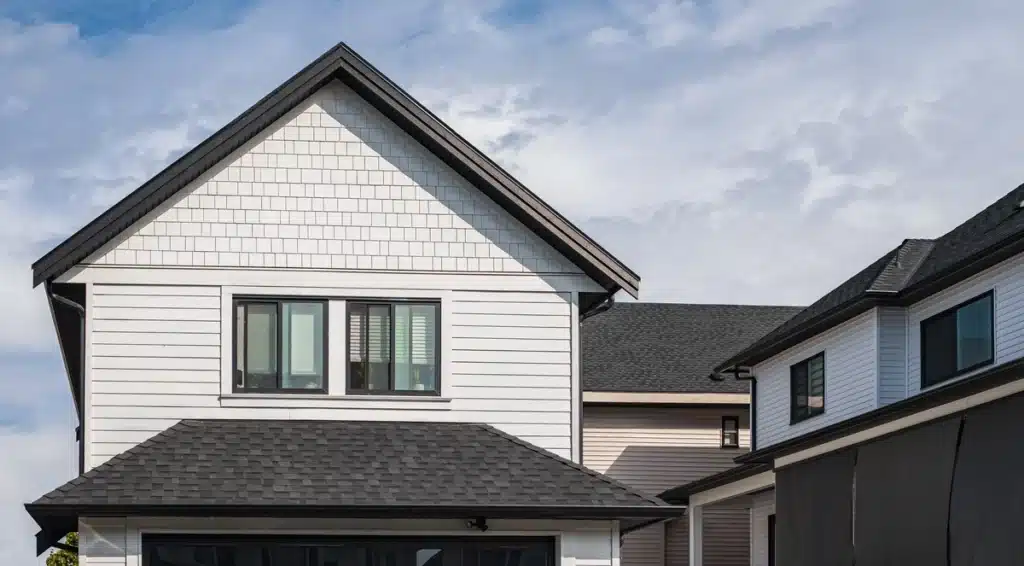Table of Contents
Understanding The Layers Of Your Roof | #1 best Tectum Roofing
Most of us know by now that Ogres are like onions…they have layers! But did you know that, by that definition, Shrek could also compare himself to a roof? Understanding The Layers Of Your Roof | #1 best Tectum Roofing
A roof is one of the most critical components of your home. While most homeowners are familiar with the surface layer of their roof, they may not fully understand the various layers that make up this essential structure. We’re here to change that! Understanding The Layers Of Your Roof | #1 best Tectum Roofing
In this blog post, we’ll teach you:
- The different roof layers
- Why homeowners should understand them
- Detail the functions of each layer
- How to identify signs of roof damage
- When to call in a professional roofing contractor for help.
Ready to understand how your roof system works? Keep reading! Understanding The Layers Of Your Roof | #1 best Tectum Roofing
Why Homeowners Should Understand the Layers of Their Roof

Understanding the layers of your roof is essential for several reasons. First and foremost, it empowers homeowners to make informed decisions about roof maintenance, repairs, and even replacement. When you know the intricacies of your roof’s structure, you can better assess its condition and take proactive steps to ensure its longevity. Here are some compelling reasons why you should delve into the layers of your roof:
- Cost-Effective Maintenance: Knowledge of your roof’s layers allows you to identify issues early, preventing costly repairs down the road. Regular inspections can catch minor problems before they escalate into major, expensive ones. Understanding The Layers Of Your Roof | #1 best Tectum Roofing
- Safety: Being aware of the layers of your roof enables you to assess safety risks and take appropriate precautions when necessary. An understanding of your roof’s structure can help you avoid accidents when carrying out maintenance tasks. Understanding The Layers Of Your Roof | #1 best Tectum Roofing
- Energy Efficiency: A well-maintained roof can contribute to your home’s energy efficiency. Understanding the layers that provide insulation and ventilation allows you to make informed decisions about energy-saving improvements. Understanding The Layers Of Your Roof | #1 best Tectum Roofing
- Better Communication with Contractors: When you speak with roofing professionals, knowing the layers of your roof can help you convey your concerns and understand their recommendations. This facilitates effective communication and ensures you receive the best service. Understanding The Layers Of Your Roof | #1 best Tectum Roofing
The 6 Different Layers of a Roof and Their Functions
A typical residential roof comprises multiple layers, each serving a specific purpose in protecting your home from the elements. Let’s explore these layers and their functions:
1) Roof Decking (Sheathing):
The bottom-most layer of your roof is the roof deck or sheathing. Usually made of plywood or oriented strand board (OSB), it provides a stable base for the rest of the roofing materials. It connects to the structural frame of your home, distributing the weight of the roof evenly. Understanding The Layers Of Your Roof | #1 best Tectum Roofing
2) Underlayment:

Installed over the roof decking, the underlayment serves as a waterproof barrier. Typically made of felt paper or synthetic materials like synthetic underlayment or ice and water shield, it protects against moisture infiltration. Understanding The Layers Of Your Roof | #1 best Tectum Roofing
In regions prone to heavy rain or snow, an ice and water shield is essential to prevent leaks. Understanding The Layers Of Your Roof | #1 best Tectum Roofing
3) Roofing Material:
The roofing material is the visible layer of your roof that most people are familiar with. Common roofing materials include:
- Asphalt shingles
- Metal panels
- Clay tiles
- Cedar shakes
Roofing materials vary in terms of durability, cost, and appearance, and your choice will affect the overall performance and aesthetics of your roof. Understanding The Layers Of Your Roof | #1 best Tectum Roofing
4) Roof Ventilation:
Ventilation is crucial for regulating temperature and moisture levels in your attic and roof space. Vents, soffits, and ridge vents allow air to circulate, preventing heat and moisture buildup. Proper ventilation extends the life of your roofing materials and helps maintain a comfortable indoor environment. Understanding The Layers Of Your Roof | #1 best Tectum Roofing
5) Insulation:
Insulation helps to regulate temperature within your home and enhance energy efficiency. Common types of insulation include:
- Fiberglass batts
- Blown-in cellulose
- Spray foam
Insulation is typically installed in the attic space, beneath the roof decking or between the rafters, depending on the design of your roof. Understanding The Layers Of Your Roof | #1 best Tectum Roofing
6) Rafters and Trusses:
The rafters or trusses are the structural framework that supports the entire roof. They distribute the weight of the roof evenly to the walls and foundation of your home.
Rafters are typically used in traditional roof designs, while trusses are more common in modern construction. Understanding The Layers Of Your Roof | #1 best Tectum Roofing
Signs of Roof Damage

Now that you understand the different layers of your roof, it’s important to be able to recognize signs of damage or wear and tear. Early detection of roof issues can save you from costly repairs and potential water damage to your home’s interior. Here are some common signs of roof damage to watch out for:
- Missing or Damaged Shingles: Missing or curled shingles are a clear indication of roof damage. They expose your roof to water infiltration and should be addressed promptly.
- Water Stains on Ceilings or Walls: Water stains indoors often point to a roof leak. It’s crucial to investigate the source of the leak and fix it to prevent further damage.
- Sagging Roof Decking: A sagging or uneven roofline can be a sign of structural damage. This should be addressed immediately to prevent potential collapse.
- Granule Loss: If you find granules from your asphalt shingles in your gutters or around your home’s foundation, it may be a sign that your shingles are deteriorating and need replacement.
- Mold or Algae Growth: Mold or algae growth on your roof can indicate excess moisture or poor ventilation. It’s important to address this issue to prevent further damage and improve indoor air quality.
- Clogged Gutters: Clogged gutters can lead to water backup on your roof, potentially causing damage to the underlayment and roof decking.
When to Call in a Professional Roofing Contractor
While some minor roof maintenance tasks can be handled by homeowners, certain situations require the expertise of a professional roofing contractor. Here are some scenarios when it’s best to call in the pros:
- Extensive Damage: If you notice widespread damage to your roof or suspect structural issues, it’s essential to consult a professional roofer to assess the extent of the damage and recommend appropriate repairs.
- Roof Replacement: When your roof reaches the end of its lifespan or has sustained irreparable damage, it’s time for a full roof replacement. A qualified roofing contractor can guide you through the process and help you choose the right materials for your needs.
- Complex Repairs: Roof repairs that involve intricate or specialized work, such as fixing leaks around chimneys or skylights, should be handled by professionals with experience in such tasks.
- Safety Concerns: Roof maintenance and repairs often involve working at heights and can be dangerous for homeowners without proper training and equipment. Safety should always be a top priority.
- Warranty Protection: If your roofing material is still under warranty, it’s crucial to hire a professional roofer for any repairs or maintenance to ensure the warranty remains valid.
Get Help With Your Roofing Project
Your roof is a complex system made up of multiple layers, each with a specific function. Understanding these layers empowers homeowners to make informed decisions about roof maintenance, repairs, and replacements. Still, you don’t need to know it all!
When you have questions about your roofing system, it is always best to enlist the help of a qualified contractor. At Tectum Roofing, we are here to answer any questions and provide you with the best roofing support in town. Contact us today to get a free estimate for your roofing project.


